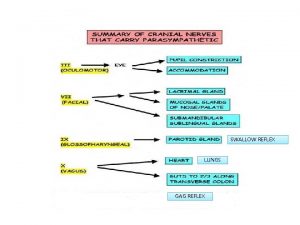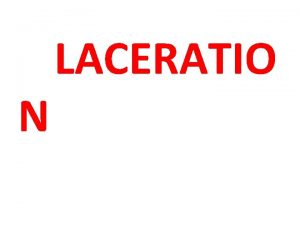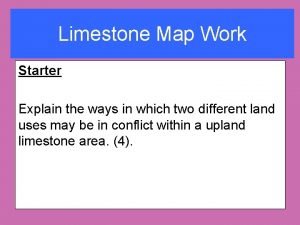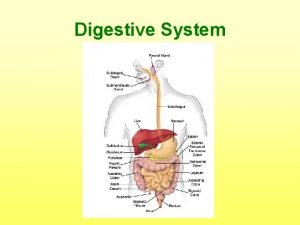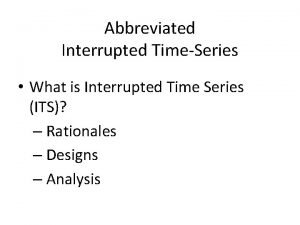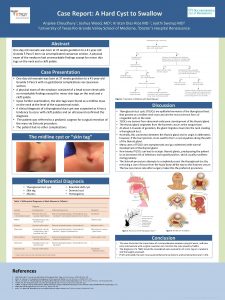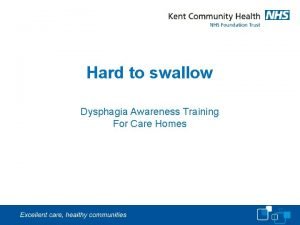Hard data to swallow an interrupted case study














- Slides: 14

Hard data to swallow: an interrupted case study Group 6: Evolution (aka team Roadkill) Kirsten Deane-Coe, Jocelyne Dolce, Thomas Fox, Janecka, Kristina Jones, Brady Porter

Background Information Intended Course: Introductory Biology for majors or non-majors Unit: Selection Teachable Unit Learning Goals • See selection as an ongoing, visible, and relevant process • Understand how selection works • Resolve misconceptions about selection Teachable Tidbit Learning Objectives • Interpret scientific data and draw conclusions • Predict the response of a population to selection • Describe adaptation to change in environment

American cliff swallow (Petrochelidon pyrrhonota)

American cliff swallow (Petrochelidon pyrrhonota) • • Average life span: 5 -8 y Aerial insectivores Agile flyers Build nests on cliffs, increasingly under bridges/overpasses • Behavior: rest on ground, launch into flight for feeding / return to nests

Charles R. Brown and Mary B. Brown (2013) Current Biology

The figure drawn on the board depicts initial results from Brown & Brown (2013) on the number of road-killed swallows found over a 30 year period Turn to your neighbor, and take 2 minutes to: 1) Interpret the data shown 2) Develop at least one hypothesis that would explain this trend

Brown & Brown 2013

Brown & Brown 2013

In your group, take a minute to discuss what, if anything, this histogram tells us Cliff Swallow Wing Length Population 20% Road Kills 16% 12% 8% 4% 0% 103 104 105 106 107 108 109 110 Wing Length, mm 111 112 113 Brown & Brown 2013

1) Copy and label the following set of axes onto the back of the concept map handout: Wing length of living birds 2) Draw your prediction of wing length of live birds over time if wing length is under selection 1983 2012 Time, years

Wing Length (cm) Average wing length of live swallows (mm) 112 111 110 109 108 107 106 105 104 1979 1989 1999 Years 2009 2019 Brown & Brown 2013

Final activity / homework: revisit concept map Revisit the concept map the class created last week (handout). The Brown & Brown (2013) study published in Current Biology is provided for your reference. Work with your partner to match the terms on p 1 of the Cliff Swallow Case Study to the concepts in the map.

Concept map: evolution by natural selection A Variation in trait Selection pressure Differences in survival/reproduction F C Heritability of trait B Response to selection Adaptation E

Teachable Tidbit Learning Objectives: ü Interpret scientific data and draw conclusions ü Describe adaptation to environmental change ü Predict the response of a population to selection Group 6: Evolution (aka team Roadkill) Kirsten Deane-Coe, Jocelyne Dolce, Thomas Fox, Janecka, Kristina Jones, Brady Porter
 Best case worst case average case
Best case worst case average case It project failure case study
It project failure case study What makes hard water hard lab investigation 3 answers
What makes hard water hard lab investigation 3 answers Have fun work hard make history
Have fun work hard make history Hard times hard drive
Hard times hard drive Data analytics lifecycle case study
Data analytics lifecycle case study Data transfer case study
Data transfer case study Peptic ulcer symptoms
Peptic ulcer symptoms Gag swallow reflexes
Gag swallow reflexes Puberphonia example
Puberphonia example Ulcerated urtree
Ulcerated urtree Swallow tail stab wound
Swallow tail stab wound Shake hole os map
Shake hole os map Varus esophagus
Varus esophagus Digestion begins in the when you chew and swallow
Digestion begins in the when you chew and swallow








